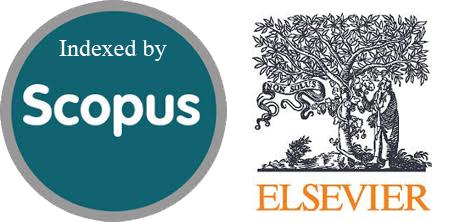E-cadherin in Age-Related Mammary Gland Changes in Women: Aperio Image Analysis
DOI:
https://doi.org/10.54133/ajms.v8i1.1679Keywords:
Alveoli, Aperio algorithm program, E-cadherin, Mammary glandsAbstract
Background: E-cadherin is a transmembrane protein that is essential for cell-cell adhesion and is primarily expressed in mammary glands and epithelial cells, particularly at intercellular junctions of ducts and lobules. It helps maintain structural integrity and prevents pathological conditions such as unregulated cell growth. Immunohistochemical analysis shows strong labeling at intercellular borders, emphasizing its role in preserving epithelial structure. Objective: To analyze age-related changes in E-cadherin expression at epithelial cell junctions using histochemical and immunohistochemical techniques. Methods: This study, conducted from April to September 2024, analyzed 60 mammary gland samples from forensic medicine cadavers. Samples from female mammary glands were categorized into three groups: group 1 (ages 15–25), group 2 (ages 26–45), and group 3 (ages 46 and older). E-cadherin was used to analyze epithelial cell interactions. Samples were processed histologically and immunohistochemically, and interactions were evaluated using the Aperio Algorithm program. Results: E-cadherin was consistently expressed on the epithelial cell surface, facilitating adhesion through tight junctions. Expression levels were higher in group 2 but decreased in group 3 compared to group 1. Statistical analysis confirmed a significant difference. Conclusions: E-cadherin plays a crucial role in signaling, proliferation, differentiation, regeneration, and maintenance of epithelial balance. Age-related changes in expression may contribute to altered epithelial integrity, especially in older individuals.
Downloads
References
Eisenbach L, Huang W, Smith C, Moore A. Age-related differences in E-cadherin expression in mammary gland tissues: A quantitative immunohistochemical analysis. J Cell Physiol. 2019;234(6):9602-9610. doi: 10.1002/jcp.27556. DOI: https://doi.org/10.1002/jcp.27556
Biswas SK, Banerjee S, Baker GW, Kuo CY, Chowdhury I. The mammary gland: basic structure and molecular signaling during development. Int J Mol Sci. 2022;23(7):3883. doi: 10.3390/ijms23073883. DOI: https://doi.org/10.3390/ijms23073883
Margan MM, Cimpean AM, Ceausu AR, Raica M. Differential expression of E-cadherin and P-cadherin in breast cancer molecular subtypes. Anticancer Res. 2020;40(10):5557-5566. doi: 10.21873/anticanres.14568. DOI: https://doi.org/10.21873/anticanres.14568
Cardiff RD, Jindal S, Treuting PM, Going JJ, Gusterson B, Thompson HJ, (Eds.) Mammary gland, In: Comparative Anatomy and Histology, (2nd Ed.), Academic Press; 2018 Jan 1:487-509. doi: 10.1016/b978-0-12-802900-8.00023-3. DOI: https://doi.org/10.1016/B978-0-12-802900-8.00023-3
Knudsen KA, Wheelock MJ. Cadherins and the mammary gland. J Cell Biochem. 2005;95(3):488-496. doi: 10.1002/jcb.20419. DOI: https://doi.org/10.1002/jcb.20419
Dzięgelewska Ż, Gajewska M, In: Mani T. Valarmathi MT, (Editor), InTech Open;. 2019 Jan 23. doi: 10.5772/intechopen.80405. DOI: https://doi.org/10.5772/intechopen.80405
Andrews JL, Kim AC, Hens JR. The role and function of cadherins in the mammary gland. Breast Cancer Res .2012;14. doi: 10.1186/bcr3065. DOI: https://doi.org/10.1186/bcr3065
Lambert AW, Weinberg RA. Linking EMT programmes to normal and neoplastic epithelial stem cells. Nat Rev Cancer. 2021;21(5):325-338. doi: 10.1186/bcr3065. DOI: https://doi.org/10.1038/s41568-021-00332-6
Meng Y, Wang Y, Liu L, Wu R, Zhang Q, Chen Z, et al. Immunohistochemistry identifies E-cadherin, N-cadherin and focal adhesion kinase (FAK) as predictors of stage I non-small cell lung carcinoma spread through the air spaces (STAS), and the combinations as prognostic factors. Transl Lung Cancer Res. 2024;13(7):1380-1395. doi: 10.21037/tlcr-24-247. DOI: https://doi.org/10.21037/tlcr-24-247
Van Roy F, Berx G. The cell-cell adhesion molecule E-cadherin. Cell Mol Life Sci. 2008;65(23):3756-3788. doi: 10.1007/s00018-008-8281-1. DOI: https://doi.org/10.1007/s00018-008-8281-1
Hassiotou F, Geddes D. Anatomy of the human mammary gland: Current status of knowledge. Clin Anatomy. 2013;26(1):29-48. doi: 10.1002/ca.22165. DOI: https://doi.org/10.1002/ca.22165
Mahmoud EM, Abdul-Hussein S. Myocardium and Coronary artery architectural changes in ovariectomized rabbit and its relation with serum estrogen level. Med J Tikrit. 2020;26(2).
Abd Fayr HH, Jaafar HA, Jarallah HA. The effect of starvation on histological and immunohistochemical features of thymic epithelial reticular cells, using Cd326 marker expression, in newborn mice. Int J Adv Res. 2018;6(6):1072-1080. doi: 10.21474/ijar01/7312. DOI: https://doi.org/10.21474/IJAR01/7312
Horobin RW. Theory of histological staining. Bancroft’s Theory and Practice of Histological Techniques, (8th Edn.), E-Book. 2018 Feb 27;114-125. doi: 10.1016/b978-0-7020-6864-5.00009-8. DOI: https://doi.org/10.1016/B978-0-7020-6864-5.00009-8
Olson AH. Image analysis using the Aperio ScanScope. Technical manual. Aperio Technologies Inc.; 2006. Available from: https://www.aperio.com
Rahman A, Muktadir MG. SPSS: An imperative quantitative data analysis tool for social science research. Int J Res Innov Soc Sci. 2021;5(10):300-302. doi: 10.47772/ijriss.2021.51012. DOI: https://doi.org/10.47772/IJRISS.2021.51012
Neville MC. Introduction: Transplantation of the normal mammary gland: Early evidence for a mammary stem cell. J Mammary Gland Biol Neoplasia. 2009;14(3):353-354. doi: 10.1007/s10911-009-9152-6. DOI: https://doi.org/10.1007/s10911-009-9152-6
Abdulrazaq AA. E-cadherin Expression in Invasive Mammary Carcinoma. Med J Babylon. 2024;21(2):389-393. doi: 10.4103/mjbl.mjbl_1006_23. DOI: https://doi.org/10.4103/MJBL.MJBL_1006_23
Mendonsa AM, Na TY, Gumbiner BM. E-cadherin in contact inhibition and cancer. Oncogene. 2018;37(35):4769-4780. doi: 10.1038/s41388-018-0304-2. DOI: https://doi.org/10.1038/s41388-018-0304-2
Shan M, Li J, Wu S, Xu Z, Sun Z, Guo J. Gene of the month: E-cadherin (CDH1). J Clin Pathol. 2013;66(11):928–932. doi: 10.1136/jclinpath-2013-201768. DOI: https://doi.org/10.1136/jclinpath-2013-201768
Jørgensen CLT, Forsare C, Bendahl P-O, Falck A-K, Fernö M, Lövgren K, et al. Expression of epithelial-mesenchymal transition-related markers and phenotypes during breast cancer progression. Breast Cancer Res Treat. 2020;181(2):369–381. doi: 10.1007/s10549-020-05627-0. DOI: https://doi.org/10.1007/s10549-020-05627-0
McQueen CM, Schmitt EE, Sarkar TR, Elswood J, Metz RP, Earnest D, Rijnkels M, Porter WW. PER2 regulation of mammary gland development. Development. 2018;145(6). doi: 10.1242/dev.157966. DOI: https://doi.org/10.1242/dev.157966
Paavolainen O, Peuhu E. Integrin-mediated adhesion and mechanosensing in the mammary gland. Semin Cell Devel Biol. 2021;114:113–125. doi: 10.1016/j.semcdb.2020.10.010. DOI: https://doi.org/10.1016/j.semcdb.2020.10.010
Saeed TM, Almufty T, Kakasur FA, Hawler NG. The role of E-cadherin in the differentiation of ductal and lobular breast carcinomas. Diyala J Med. 2020;19(1):30–38. doi: 10.26505/djm.19015250212. DOI: https://doi.org/10.26505/DJM.19015250212

Downloads
Published
How to Cite
Issue
Section
License
Copyright (c) 2025 Al-Rafidain Journal of Medical Sciences ( ISSN 2789-3219 )

This work is licensed under a Creative Commons Attribution-NonCommercial-ShareAlike 4.0 International License.
Published by Al-Rafidain University College. This is an open access journal issued under the CC BY-NC-SA 4.0 license (https://creativecommons.org/licenses/by-nc-sa/4.0/).











